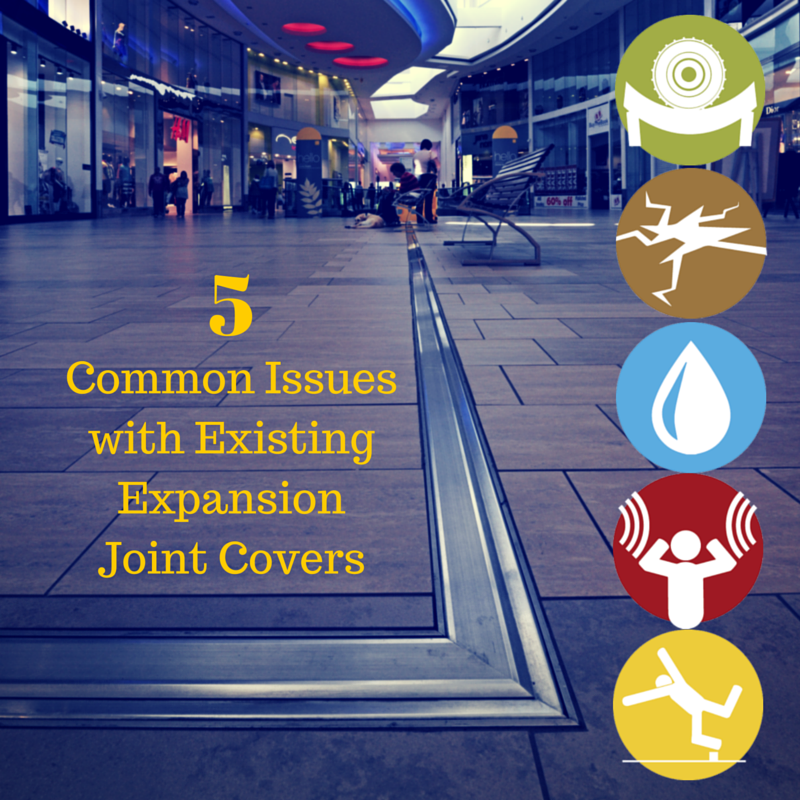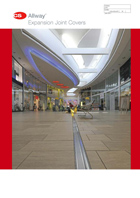Expansion joint covers have a tough life, with pedestrian and wheeled traffic moving across them every day, and strong, often frequent building movement forces pushing or pulling on them regularly.
If you need a re-cap of what an expansion joint cover is, check out our blog post explanation.
In this blog post we’ve outlined 5 of the most common issues we find with existing, already installed expansion joint covers, and point out what the potential cause was.

1. Cover Warping

Warping of the expansion joint cover can often be linked back to incorrect specification from the outset, with an architect selecting a standard duty model for an area where a heavier duty model would be more suitable.
An expansion joint cover will generally warp due to excessive point loading, so when specifying an expansion joint cover it’s important to check the point load capability of the cover, looking out for heavy duty options where applicable.
2. Finishes Cracking

Expansion joint cover finishes, such as gaskets will often crack if the building movement has exceeded what was expected, with the expansion joints generally expanding or contracting beyond their design.
Gaskets or cover plates could also begin to crack if the load capabilities were exceeded, putting too much pressure on a certain point.
We recommend talking to the structural engineer extensively at the point of specification to ensure the joint you specify will be able to cope with the expected building movement, and the end user to discuss what type of traffic will be moving across the joint once it has been installed.
3. Becoming a Tripping Hazard

Expansion joint covers can become dangerous trip hazards most commonly due to improper installation, where the blockout hasn’t been created properly causing the expansion joint cover to sit proud from the floor finish.
Of course, joint covers can also become a trip hazard if they become damaged from excessive movement or weight being applied to them causing the cover or gasket to buckle and warp.
We recommend talking to the contractor on site to emphasise the importance of the blockout being produced correctly and the end user to understand the point load requirements of the joint cover.
4. Excessive Noise

Excessive noise from an expansion joint cover is usually a sign that the internal gasket is either missing or damaged, causing the internal metal workings to scrape together.
It could also be that some of the screws holding the cover plates together may have loosened over time.
We recommend double checking the exposed screws are tightened correctly and if that doesn’t fix it a replacement may need to be sought.
5. Leaking Water

Water leaking through an expansion joint cover can often be attributed to poor blockout conditions and water actually leaking through the adjacent concrete.
If that has been ruled out it’s worth checking the moisture barrier has been installed properly, and that any joins or splices in the membrane have been done correctly.
Solution
Here at CS we have a wealth of experience with expansion joint covers, from specification and identification of the right cover through to actually installing them on site.
We’re here to help so if you have any questions or concerns about your existing expansion joint covers, don’t hesitate to get in touch:
- phone: +44 (0)1296 652800
- email: sales@c-sgroup.co.uk

